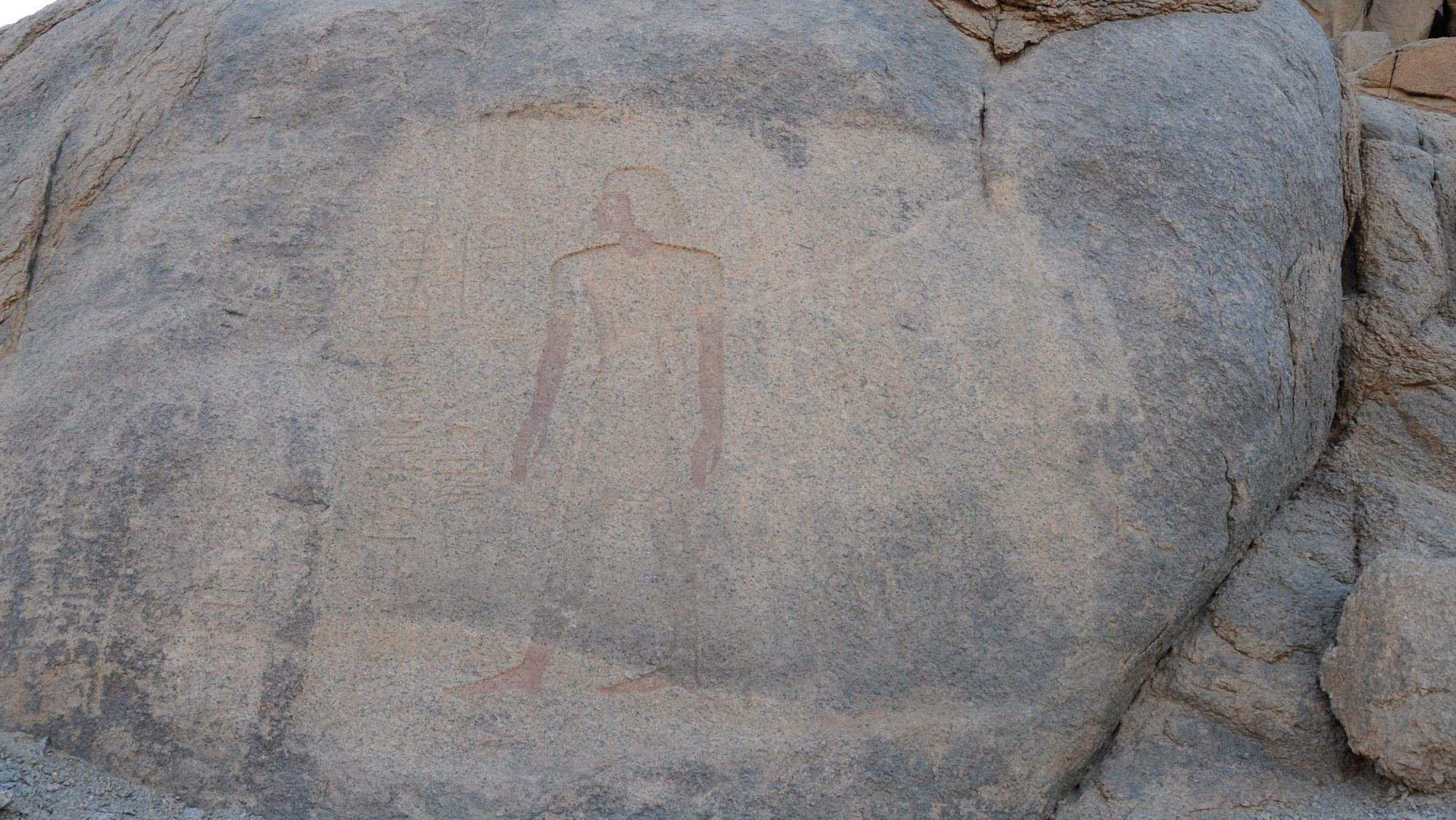Überblick
With its striking rock formations predominantly consisting of granite (particularly the distinctive pink granite of Aswan) and Nubian sandstone, the region of the First Cataract served as the backdrop for thousands of rock images and inscriptions, dating as early as prehistoric times and continuing throughout all subsequent periods of Ancient Egypt. The texts of the rock inscriptions commonly address topics reflecting the region’s significance as political border to adjacent Nubia since the Early Dynastic Period and, thus, its military and economic importance, as well as the distinct cult of the local gods. As these inscriptions are largely to be found as clusters at focal sites, placed in visible positions, they aim towards an outwardly orientated, public form of communication. The textual content of the inscriptions is frequently illustrated by images of single figures or scenes of cultic acts. Both text and figures alike could be highlighted by means of colour application which most likely not only served to enhance visibility; rather, a profound symbolism was assigned to colours and their context of usage in Ancient Egypt. Hence, colours played an essential role in the accomplishment of the specific function of depictions, objects, and texts. Therefore, a multi-layered meaning can likewise be assumed for the colour applications on rock inscriptions. This subproject, which is part of the project “Aswan – a Universe of Media”, is aimed at examining this hypothesis. As a pilot scheme, the investigation has been initially restricted in scope regarding time, space and context, focusing on the New Kingdom rock inscription corpus on Sehel, an island in the Nile not far from Elephantine Island where the cult of the goddess Anukis was located.

